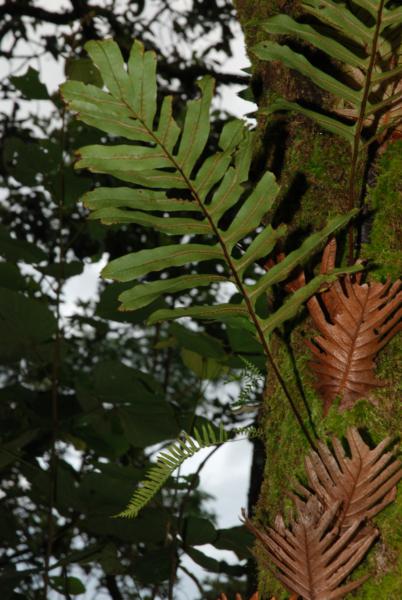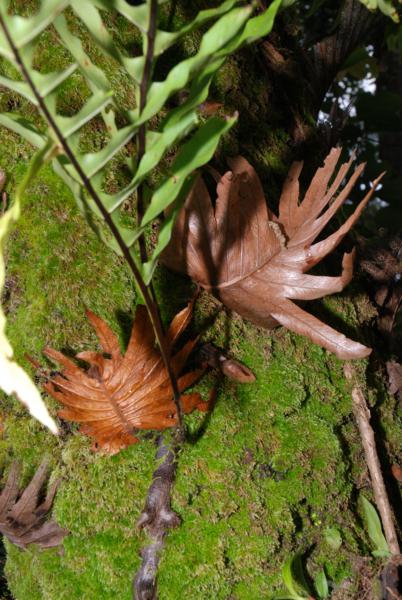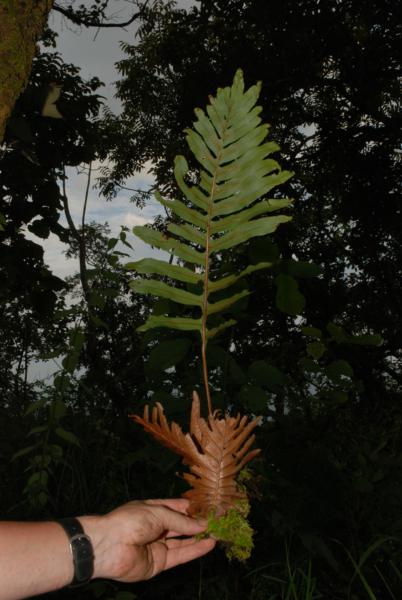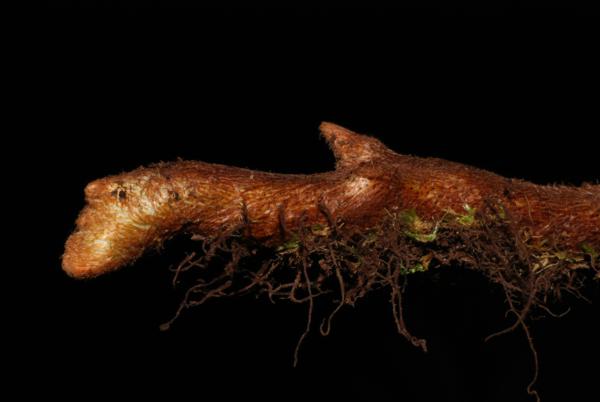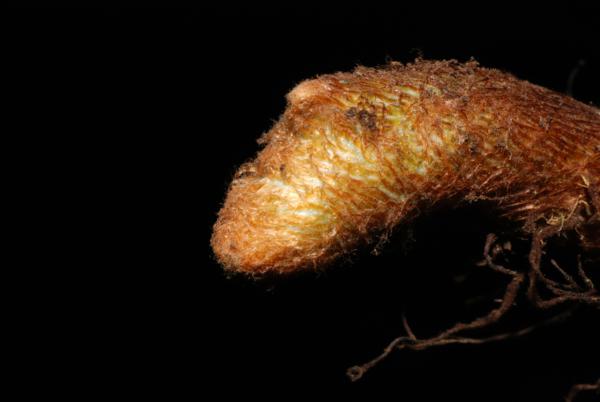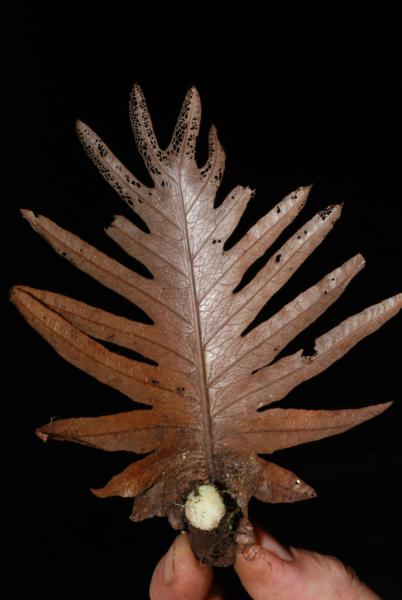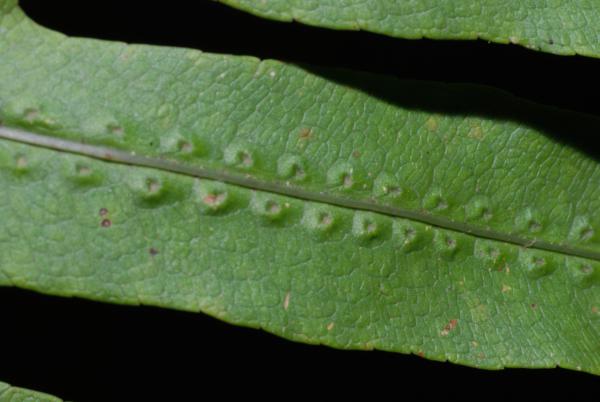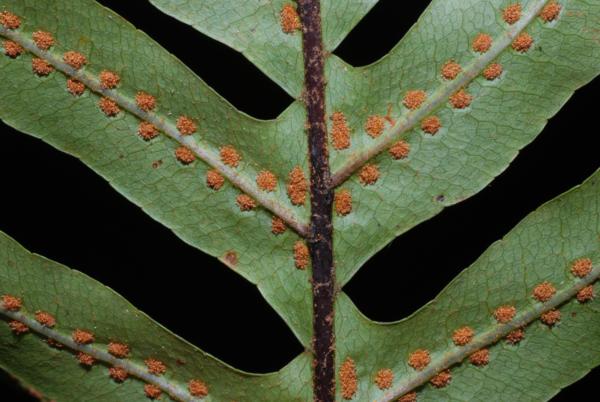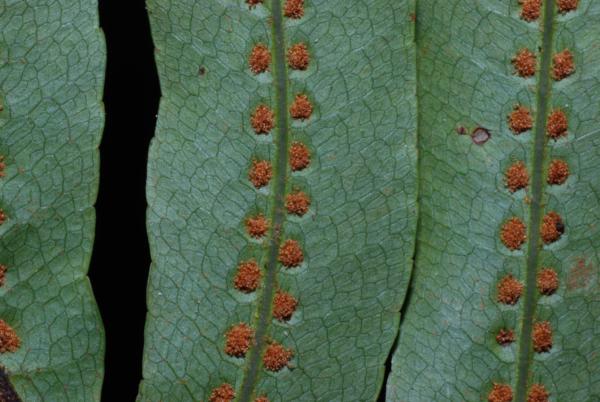
Drynaria propinqua (Wall. ex Mett.) J.Sm. ex Bedd.
Family
Polypodiaceae
Nomenclature
Drynaria propinqua (Wall. ex Mett.) J.Sm. ex Bedd., Ferns Brit. India: t. 160. 1866; Bedd., Handb. Ferns Brit. India: 339, f. 189. 1883; C.Chr., Contr. U.S. Natl. Herb. 26: 334. 1931; Tardieu & C.Chr., Fl. Indo-Chine 7(2): 521. 1941; Holttum, Dansk Bot. Ark. 20: 20. 1961; Tagawa, J. Jap. Bot. 38: 329.1963; Tagawa & K.Iwats., SouthE. Asian Stud. 5: 59. 1967; Tagawa & K.Iwats., Fl. Thailand 3: 547. 1989; Boonkerd & Pollawatn, Pterid. Thailand: 250, 269. 2000; Newman et al., Checkl. Vasc. Pl. Lao PDR: 29. 2007. – Polypodium propinquum Wall. ex Mett., Abh. Senck. Naturf. Ges. 2: 120, t. 3, f. 50. 1857. – Type: Wallich 293, Nepal (K-W, US).
Description
Rhizome long creeping, up to 1 cm diam., very densely scaly throughout; scales persistent, narrowing from round peltate base to long-tailed apex, about 8 by 1.5 mm, pale brown with dark centre, the margin bearing long white downy hairs. Nest-leaves sessile, ovate, about 20 cm in both length and width, deeply lobed more than half-way to midribs; lobes narrowly subtriangular, acute at apex, entire, up to 7 by 2.5 cm, small scales with downy hairs more or less dense on main axes. Foliage-leaves: stipes stramineous, up to 15 cm long, narrowly winged at least on the upper part; laminae oblong to oblong-lanceolate, up to 40 by 25 cm, deeply lobed almost to rachis, remaining wings of rachis less than 2 mm in breadth; lobes 8–12(–16) pairs, lanceolate, acute to acuminate at apex, slightly narrowing towards base, more or less ascending, up to 15 by 2.5 cm, entire; veins distinct on both surfaces, anastomosing, 2–4 rows of anastomosis between main veins, with included free veinlets; papyraceous, light green. Sori round, one row along each side and close to costa, one between adjacent main veins, a little raised on upper surface.
Distribution in Thailand
NORTHERN: Chiang Mai.
Distribution in Laos
Luang Phrabang, Xieng Khouang.
Wider Distribution
Himalayas, S China, Burma, Laos, N Vietnam.
Ecology
On mossy tree trunks in dense evergreen forests at 1200– 1700 m alt., locally abundant.
Proposed IUCN Conservation Assessment
Least Concern (LC). This species is widespread and not under any known threat.
Voucher specimens - Thailand
Middleton et al. 4992, Chiang Mai, Doi Chiang Dao Wildlife Sanctuary (E).
Habit
Nest leaves
Whole plant
Rhizome
Scales
Nest leaf
Frond upper surface
Frond undersurface
Sori
Site hosted by the Royal Botanic Garden Edinburgh. Content managed by Stuart Lindsay, Gardens by the Bay, Singapore and David Middleton, Singapore Botanic Gardens. Last updated 24 January 2012
